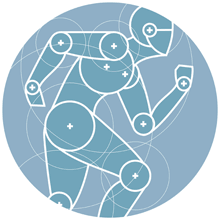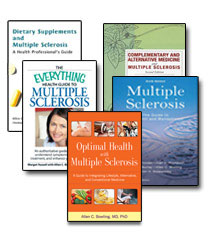Acupuncture is one component of traditional Chinese medicine (TCM), a healing method that has been practiced for more than two millennia. It is practiced by approximately 25 percent of the world’s population and growing in popularity in the United States. In contrast to Western medicine, which uses a biological approach to treatment, acupuncture is based on a complex, energy-based theory of body functioning. In this theory, it is believed that a balance exists between opposites, known as yin and yang. Also a free flow of energy, qi, is thought to pass through twelve major pathways, or meridians, on the body. Disease states are thought to result from a disruption of the normal energy flow.
Treatment Approach
Acupuncture is the practice of inserting thin, solid needles into points along the twelve meridians in an effort to alter the flow of energy. Four to twelve points are typically used in a session, but there are approximately 400 hundred points from which practitioners may choose.
There are variants of acupuncture which use the same points but different methods to presumably alter the energy flow. Acupressure, or, in Japan, shiatsu, uses finger pressure on these points, cupping uses small hot cups,electroacupuncture uses electrically stimulated needles, and moxibustion uses smoldering fibers of an herb called Asian mugwort. Trancutaneous electrical nerve stimulation (TENS) is a variant of electroacupuncture.
Evaluation in MS and Other Conditions
Although the number of studies exploring the effectiveness of acupuncture is large, the number of large-scale, well-conducted studies is significantly smaller. In 1997, the National Institutes of Health (NIH) organized a 12-member panel to review the available studies on acupuncture. This panel concluded there was “clear evidence” demonstrating acupuncture was beneficial for relieving pain, nausea, and vomiting in some medical conditions. They went further to state that the evidence was as strong as it is “for many accepted Western medical therapies” and that is was a “reasonable option” for some conditions.
There are few studies evaluating the effectiveness of acupuncture in MS. These studies have shown mild, short-lasting benefits. One suggested there might be improvement in MS-related bladder difficulties and several others have shown conflicting results on how acupuncture affects spasticity.
A large-scale survey, in British Columbia, reported that around two-thirds of MS patients benefited from acupuncture. Symptomatic improvements were seen for pain, bowel and bladder problems, spasticity, weakness, incoordination, tingling, and sleep disorders. However, patients also reported increased fatigue, spasticity, and dizziness.
Symptoms typically associated with MS occur in many other diseases. Some work has been done evaluating acupuncture for the treatment of symptoms in people whose underlying condition was not MS. These limited and variable quality studies have suggested acupuncture may produce mild improvements in symptoms including pain, weakness, anxiety, depression, dizziness, sleeping difficulties, and urinary difficulties.
Adverse Effects
Side effects associated with acupuncture are extremely low. The NIH panel on acupuncture found that acupuncture was “remarkably safe with fewer side effects than many well-established therapies.” Minor adverse reactions include bruising at acupuncture sites, fatigue, needle pain, and bleeding. Serious complications are rarely seen and are often caused by negligent or poorly trained acupuncturists.
Fatigue may occur in up to one-third of people.
It is important that sterile, disposable needles are used in order to prevent blood-borne disease transmission. People with prosthetic or damaged heart valves should avoid acupuncture due to the risk of infection. Acupuncture to the chest carries an increased risk of heart or lung damage if not done carefully. There is a potential for electroacupunture to produce heart-rhythm abnormalities in patients with pacemakers. Patients with bleeding disorders or who are taking blood-thinning medications are at an increased risk for bruising and bleeding complications. Moxibustion may cause breathing issues in asthma patients.
Summary
In small, preliminary studies, acupuncture has been shown to have potential benefits for some MS-related symptoms. It is generally well tolerated, but there is a slight chance of serious side effects in susceptible people. Acupuncture might be a reasonable treatment option for some people with MS.
References and Additional Reading
Books
Bowling AC. Complementary and Alternative Medicine and Multiple Sclerosis. New York: Demos Medical Publishing, 2007, pp. 29-39.
Filshie J, White A. Medical Acupuncture A Western Scientific Approach. Edinburgh: Churchill Livingstone, 1998.
Freeman L. Mosby’s Complementary and Alternative Medicine: A Research-Based Approach. St. Louis: Mosby, 2001, pp. 333–369.
Hsu DT, Cheng RL. Acupuncture. In: Weintraub MI, Micozzi MS, eds. Alternative and Complementary Treatments in Neurologic Illness. New York: Churchill Livingstone, 2001, pp. 11–26.
Lin Y-C. Acupuncture and traditional Chinese medicine. In: Oken BS, ed. Complementary Therapies in Neurology. London: Parthenon Publishing, 2004, pp. 113–125.
Nielsen A, Hammerschlag R. Acupuncture and East Asian medicine. In: Kligler B, Lee R, eds. Integrative Medicine: Principles for Practice. New York: McGraw Hill, 2004, pp. 177–217.
Navarra T. The Encyclopedia of Complementary and Alternative Medicine. New York: Checkmark Books. 2005, pp. 2–5.
Journal Articles
Miller RE. An investigation into the management of the spasticity experienced by some patients with multiple sclerosis using acupuncture based on traditional Chinese medicine. Compl Ther Med 1996;4:58–62.
NIH Consensus Development Panel on Acupuncture. JAMA 1998;280:1518–1524.
Rabinstein AA, Shulman LM. Acupuncture in clinical neurology. Neurologist 2003;9:137–148.






